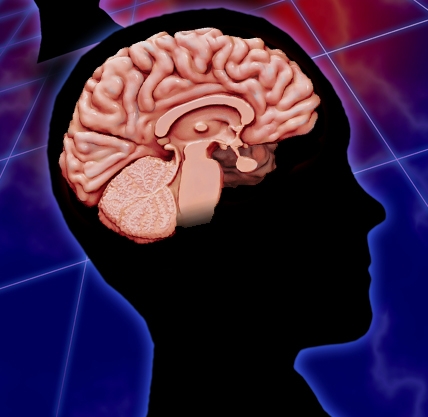The Evolution of the Pupilometer and Traumatic Brain Injury Treatment

A pupillometer is an instrument used by doctors to measure pupil size and how it reacts to various stimuli, including light. It is typically used during a routine eye exam and measures the size, shape, symmetry, and reaction to light of the patient’s pupils. An eye doctor will compare, or “map,” the size of one pupil to the other, as well as any reaction differences between them.
The Pupilometer is a relatively new device for TBI treatment, but is it changing the way doctors approach caring for these injuries? Read on to learn about the Pupilometer and whether it’s changing how professionals treat traumatic brain injuries.
What is a traumatic brain injury?
A traumatic brain injury is an injury that is directly caused by an external force to the head. These injuries can cause devastating damage to the brain and result in long-term impairments, often in a significant portion of cases.
These injuries are typically associated with military combat, sports, and vehicle accidents.
What are the symptoms of traumatic brain injury?
1. Loss of consciousness for several minutes to hours
Loss of consciousness is a major symptom of traumatic brain injury. While the actual severity of the injury is often dependent on the extent of the brain damage sustained, this symptom is commonly linked to cases where the brain is severely injured.
2. Persistent headache or headache that worsens
Many sufferers of traumatic brain injuries report experiencing severe headaches. While these headaches may improve with time, in most of these instances where the traumatic brain injury is serious, the headache may worsen in time. This occurrence is common in cases where the skull is fractured or when the brain tissue is injured.
3. Repeated vomiting or nausea after injury
This symptom can be linked to cases where the head is injured. As the head is often significantly impacted in cases of traumatic brain injuries, victims commonly report feeling nauseated or vomiting. This can occur even if the victim does not have a history of motion sickness.
4. Convulsions or seizures
Convulsions and/or seizures are common in cases of traumatic brain injury. These symptoms do not seem to appear immediately after the injury but may appear within the next few hours or days. Those who have sustained or have a hidden traumatic brain injury may experience issues with balance or coordination, tremors, and muscle spasms. Depending on the severity of the injury, seizures may worsen in the first few weeks.
5. Dilation of one or both pupils of the eyes
Due to compression of the brain, the eyes may not react properly to light or may no longer react to light at all. Due to the decreased reactivity of the eyes, they may dilate or constrict based on the light that is in the environment. In some cases, one pupil may expand significantly more than the other.
What are the treatments for traumatic brain injury?
Treatments for traumatic brain injury vary depending on the severity of the injury, the location of the injury, and the symptoms that the individual is experiencing. As with any traumatic injury, the individual may be sent to a medical facility for immediate treatment. This may include CT scans, an MRI, and/or surgery. If a patient is experiencing seizures, the individual should be taken to a medical facility that is equipped to handle seizures.
Another more modern and safer method of detecting traumatic brain injuries is the pupilometer. This is an optoelectronic device, which is an electro-photonic instrument used for measuring the diameter of the pupils and determining the state of the autonomic nervous system.
This invention is a revolutionary device in the field of medicine and physical diagnosis and is based on the fact that the diameter of the pupil depends not only on the light conditions but also on the state of the autonomic nervous system.
How does a pupilometer work?
The pupilometer is a device that takes the pupil diameter measurement from the cornea to the back of the iris, which is then converted to a numerical figure.
This process is done in a fraction of a second and is completely non-invasive. The results are displayed on a monitor for both the doctor and the patient (or parent) to see.
What are the types of brain injuries a pupilometer can detect?
1. Hematoma
A hematoma is an accumulation of blood in the brain. When blood accumulates in the brain, it is often due to a ruptured blood vessel. Because the blood is often pressed against the surface of the brain, a hematoma can cause bleeding in the brain and further damage.
2. Contusion
A contusion is bruising in the brain. The brain itself is made of very soft tissue, and therefore, when there is a blunt impact on the head, it is often very difficult to determine if the brain is bruised. If the contusion is deep, the brain can be squeezed, causing damage.
3. Intracerebral hemorrhage
When large blood vessels are ruptured, it causes bleeding inside the brain and intracerebral hemorrhage. If the blood vessels are small, it does not cause much damage, but if the vessels are large, it can be fatal.
4. Subarachnoid hemorrhage
A subarachnoid hemorrhage is bleeding on the surface of the brain. Like intracerebral hemorrhage, if the blood vessels are large, it can be fatal.
5. Diffuse Injuries
Diffuse injuries are widespread damage to the brain. If there is a fall, the whole brain may be shaken, resulting in diffuse injuries. Even if the injury is not severe, small diffuse injuries can cause serious damage.
Conclusion
The pupilometer is certainly a significant technological addition to the field of diagnosis. It is a useful aid to medical professionals when determining the pupillary size measurement and examining an individual after trauma or even during regular medical examinations.








